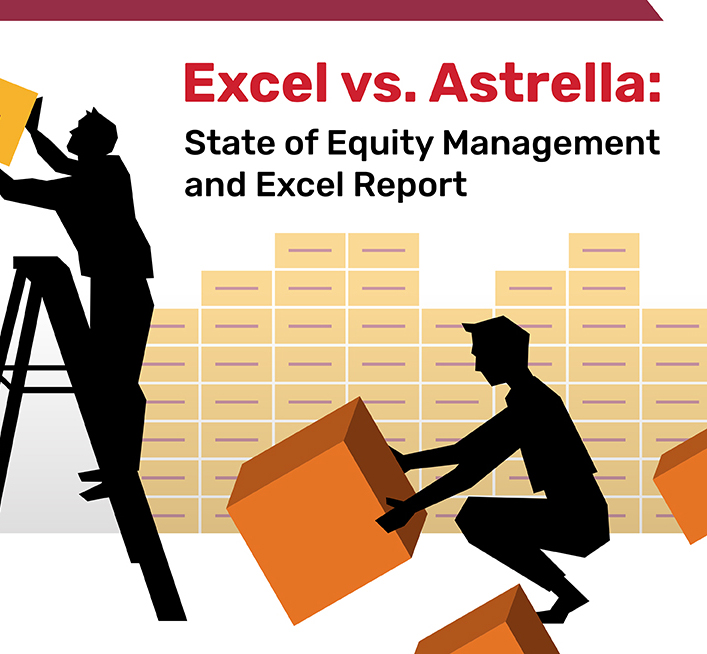In the world of startups, capital is essential for growth. However, securing funding can be complex, especially when structuring the company’s cap table. A well-structured cap table not only attracts investors but also ensures fair allocation of ownership and mitigates potential conflicts. This blog post will delve into the intricacies of cap table structuring for growth-stage startups, covering crucial aspects such as valuation methods, share allocation, dilution impact, vesting schedules, and documentation. By understanding these elements, startups can set the stage for successful fundraising and long-term growth.
Determining the Right Valuation Method
The valuation of a startup is a critical aspect of cap table structuring, as it serves as the foundation for allocating ownership and attracting investors. Choosing the proper valuation method is essential to ensure a fair representation of the company’s worth and to set the stage for future growth.
When determining the valuation of a growth-stage startup, several factors come into play. The company’s stage of development, its growth potential, and the industry it operates in are all key considerations. For instance, startups in the early stages of development may need more revenue or traction, making it challenging to predict their future value accurately. In such cases, valuation methods that emphasize qualitative factors, such as the team’s expertise or market opportunity, may be more appropriate.
On the other hand, growth-stage startups with a proven track record of growth and revenue generation may benefit from valuation methods that focus on financial metrics. These methods, such as the discounted cash flow (DCF) method or the comparable company analysis, attempt to quantify the company’s future cash flows or market value based on its historical performance and industry benchmarks.
To arrive at a well-rounded valuation, it is often advisable for startups to employ a combination of valuation methods. This approach helps mitigate the limitations of any single method and provides a more comprehensive assessment of the company’s value. By carefully considering the abovementioned factors and selecting the appropriate valuation method, growth-stage startups can establish a strong foundation for their cap table structure and position themselves for successful fundraising.
Series B and Series C Funding
Series B and Series C funding rounds represent significant milestones in a startup’s growth trajectory. These rounds involve raising capital from institutional investors, such as venture capital firms and private equity funds, to fuel the company’s expansion and scale its operations.
Series B funding typically occurs when a startup has demonstrated product-market fit and is ready to scale its business model. This round focuses on growth and expansion, with the capital raised being used for activities such as expanding the sales and marketing team, enhancing the product or service, and entering new markets. The company’s valuation at this stage is typically higher than the Series A round, reflecting the progress made and the increased potential for growth. Investors in a Series B round often expect the startup to achieve specific milestones, such as reaching certain revenue targets or expanding into new geographic regions.
Series C funding builds upon the momentum gained from the Series B round and aims to further accelerate the company’s growth. At this stage, the startup is typically well-established in its market and has a clear path to profitability. The capital raised in a Series C round is used to scale the business even more aggressively, invest in research and development, and potentially make strategic acquisitions. The company’s valuation at this stage is significantly higher than in previous rounds, reflecting the company’s increased maturity and growth potential. Investors in a Series C round often expect the startup to demonstrate a clear path to profitability and have a well-defined strategy for long-term success.
In both Series B and Series C rounds, the terms of the investment, including the valuation, dilution, and liquidation preferences, are carefully negotiated between the startup and the investors. Startups must understand these terms’ implications and negotiate favorable conditions aligning with their long-term goals and interests.
Allocating Shares Fairly
Allocating shares fairly among founders, employees, and investors is crucial for the success of a growth-stage startup. Several factors come into play when making these decisions, including each individual’s contributions and roles, vesting schedules, and the need to take a long-term perspective.
Founders should consider their contributions to the company’s development, such as the initial idea, market research, product development, and funding. Employees should be rewarded for their skills, experience, and dedication to the company’s growth. On the other hand, investors should be compensated for the financial resources they provide and the risks they undertake.
Vesting schedules can align the interests of founders, employees, and investors with the startup’s long-term success. Vesting schedules typically require individuals to earn their shares over time, often tied to specific performance milestones or achieving certain company goals. This helps ensure individuals remain committed to the startup’s growth and success.
It’s also important to consider the impact of share allocation on the startup’s future fundraising efforts. Giving away too much equity too early can make it challenging to attract new investors down the road. Founders should seek advice from legal and financial experts to ensure compliance with relevant regulations and to make informed decisions on share allocation that balance the interests of all stakeholders.
In conclusion, allocating shares fairly among founders, employees, and investors is a critical aspect of cap table structuring for growth-stage startups. By carefully considering each individual’s contributions, using vesting schedules, and taking a long-term perspective, startups can ensure they are well-positioned for success and growth.
Understanding the Impact of Dilution
Dilution refers to the decrease in ownership percentage experienced by existing shareholders when new shares are issued. In the context of growth-stage startups, dilution can occur during subsequent funding rounds as new investors come on board. Understanding the impact of dilution is crucial for founders and existing shareholders as it affects their ownership stake and decision-making power.
There are several ways in which dilution can occur:
- Issuance of New Shares: A startup raises capital through a new funding round and typically issues new shares to investors. This increases the total number of outstanding shares, thereby diluting the ownership percentage of existing shareholders.
- Conversion of Preferred Shares: Some investors may receive preferred shares that can be converted into common shares later. When these preferred shares are converted, the total number of common shares increases, leading to dilution.
- Employee Stock Options: Startups often offer stock options to employees as part of their compensation package. When these options are exercised, the employees become shareholders, increasing the total number of outstanding shares and diluting the ownership of existing shareholders.
It’s important for founders and existing shareholders to be aware of dilution’s potential impact and negotiate terms that protect their interests. Some strategies to minimize dilution include:
- Issuing Different Classes of Shares: Startups can issue shares with varying rights and preferences. For example, founders may retain a class of shares with more voting rights to maintain company control.
- Setting a High Valuation: A higher valuation at each funding round reduces the percentage of ownership that new investors receive, thereby minimizing dilution.
- Negotiating Anti-Dilution Provisions: Founders can negotiate anti-dilution provisions in investment agreements that protect their ownership percentage in case of future down rounds.
Understanding the impact of dilution and implementing appropriate strategies to minimize it are essential for founders and existing shareholders to maintain control and protect their interests as a growth-stage startup raises capital and expands.
Creating a Vesting Schedule
Creating a vesting schedule is an essential component of equity compensation for growth-stage startups. It allows founders and investors to align the interests of employees and shareholders, ensuring that everyone is incentivized to work towards the company’s long-term success. Vesting schedules determine when employees earn equity awards, typically tied to specific performance milestones or company goals.
When establishing a vesting schedule, there are several key considerations:
Vesting Period: The vesting period refers to the duration over which employees earn their equity awards. Standard vesting periods range from one to four years, with a one-year cliff (meaning no vesting occurs during the first year) being a standard structure. The length of the vesting period should be determined based on the company’s growth stage, the level of risk involved, and the desired level of employee retention.
- Vesting Schedule: Companies can choose different vesting schedules within the vesting period to determine how equity awards are earned over time. Some standard vesting schedules include:
- Linear Vesting: Shares vest evenly over the vesting period.
- Accelerated Vesting: Shares vest more quickly in the early years and slower in the later years.
- Backloaded Vesting: Shares vest slowly in the early years and more quickly in the later years.
- Milestone-Based Vesting: Shares vest upon achieving specific milestones or performance targets.
- Milestones and Conditions: To ensure that vesting is tied to the company’s success and employee performance, vesting schedules often include milestones or conditions that must be met before shares can vest. Milestones can be based on financial metrics (e.g., revenue targets), product development goals, or other vital achievements.
- Vesting Acceleration: In certain circumstances, companies may accelerate the vesting of equity awards. This can be done to reward exceptional performance, retain key employees, or in the event of a liquidity event (such as an acquisition or IPO). Acceleration provisions should be clearly defined and communicated to employees.
By carefully crafting a vesting schedule that aligns with the company’s goals and employee incentives, startups can attract and retain top talent, promote long-term commitment, and ensure that equity compensation is a powerful tool for growth and success.
Documentation
Plays a crucial role in ensuring the legal validity and transparency of cap table structuring for growth-stage startups. A well-documented cap table comprehensively records ownership, rights, and obligations among founders, employees, and investors. It becomes essential when the startup embarks on fundraising rounds or undergoes changes in its ownership structure.
One of the critical documents in cap table structuring is the shareholders’ agreement. This agreement outlines the rights, responsibilities, and relationships between the startup’s shareholders. It typically includes provisions on voting rights, dividend distribution, transfer of shares, and dispute resolution mechanisms. A well-crafted shareholders’ agreement helps prevent conflicts and ensures that the interests of all shareholders are protected.
Another essential document is the stock purchase agreement. This agreement governs the sale and purchase of shares in the startup. It specifies the terms and conditions of the transaction, including the purchase price, payment methods, and any representations or warranties made by the parties involved. A stock purchase agreement helps ensure that the transfer of shares is legally binding and protects the rights of both the buyer and the seller.
In addition to these agreements, startups should issue stock certificates to shareholders as proof of ownership. Stock certificates contain essential information such as the shareholder’s name, the number of shares held, and the date of issuance. Maintaining an accurate and up-to-date record of stock certificates is crucial for tracking ownership and facilitating future transactions.
Finally, startups must comply with various legal requirements related to cap table structuring. This includes filing paperwork with government agencies, such as the Securities and Exchange Commission (SEC) in the United States. Startups may need to file periodic reports, disclose ownership information, and provide updates on any material changes in their cap table. Failing to comply with these requirements can result in legal consequences and hinder the startup’s ability to raise capital.
Conclusion
In conclusion, cap table structuring is crucial for fundraising for growth-stage startups. By determining the proper valuation method, allocating shares fairly, understanding the impact of dilution, creating a vesting schedule, and ensuring adequate documentation, startups can set themselves up for success and attract the right investors to support their growth. A well-structured cap table ensures fair distribution of ownership and risk, facilitates future fundraising rounds, and clarifies investors and stakeholders. Following these best practices, growth-stage startups can position themselves for sustained growth and long-term success.
Cap table management software offers invaluable assistance in handling all these matters. It streamlines the process of determining valuations by providing tools for various valuation methods, including DCF and comparable company analysis. Additionally, it facilitates fair allocation of shares by automating calculations based on contributions, roles, and vesting schedules. Moreover, it helps in understanding and mitigating dilution by simulating the impact of new funding rounds and employee stock options. With built-in documentation features, it ensures legal compliance and transparency, simplifying the management of shareholder agreements and stock transactions. In essence, cap table management software is an indispensable tool for growth-stage startups navigating the complexities of fundraising and ownership structuring.

Tom Kirby
Tom Kirby serves as the Head of Global Sales at Astrella. With more than 20 years of experience in sales and business development, he is dedicated to fostering strong client relationships and assisting both private and public companies in understanding and effectively communicating their value.
- Tom Kirby#molongui-disabled-link
- Tom Kirby#molongui-disabled-link
- Tom Kirby#molongui-disabled-link
- Tom Kirby#molongui-disabled-link
































































































































